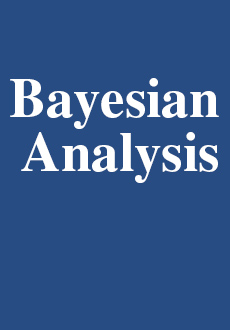Abstract
In difficult object segmentation tasks, utilizing image information alone is not sufficient; incorporation of object shape prior models is necessary to obtain competitive segmentation performance. Most formulations that incorporate both shape and image information are in the form of energy functional optimization problems. This paper introduces a Bayesian latent marked Poisson process for segmenting multiple objects in an image. The model takes both shape and image feature/appearance into account—it generates object locations from a spatial Poisson process, then generates shape parameters from a shape prior model as the latent marks. Inferentially, this partitions the image: pixels inside objects are assumed to be generated from an object observation/appearance model and pixels outside objects come from a background model. The Poisson process provides (non-homogeneous) spatial priors for object locations and the marks allow the incorporation of shape priors. We develop a hybrid Gibbs sampler that addresses the variation in model order and nonconjugacy that arise in this setting and we present experimental results on synthetic images and two diverse domains in real images: cell segmentation in biological images and pedestrian and car detection in traffic images.
Citation
Sindhu Ghanta. Jennifer G. Dy. Donglin Niu. Michael I. Jordan. "Latent Marked Poisson Process with Applications to Object Segmentation." Bayesian Anal. 13 (1) 85 - 113, March 2018. https://doi.org/10.1214/16-BA1035





